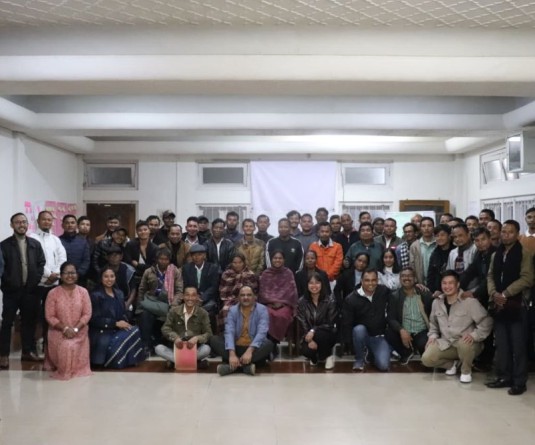
Guwahati | February 13 : Any reason is good enough for a festival in India. Jeypore perhaps beats them all – for being India’s only wet evergreen rainforest with the most species of wildcats. Jeypore Reserve Forest, part of the 111 sq km Dehing-Patkai Wildlife Sanctuary, is sited 60 km southeast of this eastern Assam town. It is one of a troika of Indian rainforests, the other two being Silent Valley in Kerala and the Andaman Islands.
But Jeypore, says DFO Anurag Singh, is in a completely different league and it scores higher on the biodiversity count by virtue of being a wet evergreen on the India-Burma-Malaysia axis. It also extends into adjoining Arunachal Pradesh for another 700 sq km.
“What sets Jeypore apart from other wildlife preserves, leave apart rainforests, is that it is home to seven varieties of wildcats including the Royal Bengal tiger, clouded leopard, common leopard, marbled cat and golden cat,” Singh says. Jeypore is also home to India’s only ape, the hoolock gibbon.
But this dense wildcat home had in the past two decades also been a retreat for militants and anti-socials relying on hit-and-run operations. Jeypore had also suffered from felling and unauthorized activities such as extraction of sand and stones from three rivers – Namsang, Burhidehing and Dilli – that skirt it.
It was to underscore Jeypore’s global ecological status that the Dibrugarh district authorities organized the first Rainforest Festival from Friday. The festival showcasing eastern Assam’s ethnic as well as green heritage, runs through till Sunday. “The rainforest with its unique biodiversity controls climatic conditions and water cycle thereby ensuring overall well being,” said Assam assembly Deputy Speaker Pranati Phukan, who represents the Naharkatiya constituency nearby. “The presence of the unique rainforest in this part of the world is a great boon for the local populace.”
Jeypore, notably, is the gateway to Tirap district of Arunachal Pradesh. A pilgrim spot nearby is Sitakunda, where Sita of ‘Ramayana’ fame is believed to have stayed during her exile. For the ethnically inclined is the Namphake village inhabited by the endangered Tai Phake community.
But Jeypore, says DFO Anurag Singh, is in a completely different league and it scores higher on the biodiversity count by virtue of being a wet evergreen on the India-Burma-Malaysia axis. It also extends into adjoining Arunachal Pradesh for another 700 sq km.
“What sets Jeypore apart from other wildlife preserves, leave apart rainforests, is that it is home to seven varieties of wildcats including the Royal Bengal tiger, clouded leopard, common leopard, marbled cat and golden cat,” Singh says. Jeypore is also home to India’s only ape, the hoolock gibbon.
But this dense wildcat home had in the past two decades also been a retreat for militants and anti-socials relying on hit-and-run operations. Jeypore had also suffered from felling and unauthorized activities such as extraction of sand and stones from three rivers – Namsang, Burhidehing and Dilli – that skirt it.
It was to underscore Jeypore’s global ecological status that the Dibrugarh district authorities organized the first Rainforest Festival from Friday. The festival showcasing eastern Assam’s ethnic as well as green heritage, runs through till Sunday. “The rainforest with its unique biodiversity controls climatic conditions and water cycle thereby ensuring overall well being,” said Assam assembly Deputy Speaker Pranati Phukan, who represents the Naharkatiya constituency nearby. “The presence of the unique rainforest in this part of the world is a great boon for the local populace.”
Jeypore, notably, is the gateway to Tirap district of Arunachal Pradesh. A pilgrim spot nearby is Sitakunda, where Sita of ‘Ramayana’ fame is believed to have stayed during her exile. For the ethnically inclined is the Namphake village inhabited by the endangered Tai Phake community.


.jpg)



